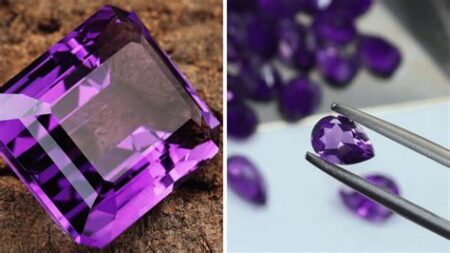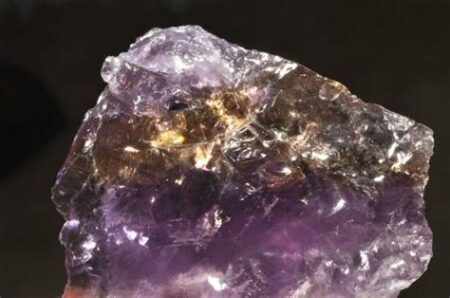A Glimpse into the Frozen Moments of Time
Crystallized fossils, relics of bygone eras, offer an invaluable window into the evolutionary history of life on Earth. These remnants of ancient organisms, preserved within shimmering mineral crystals, provide a captivating glimpse into the vibrant tapestry of the past. From microscopic plankton to majestic dinosaurs, crystallized fossils have played a pivotal role in shaping our understanding of the planet’s diverse ecosystems and the relentless march of time.

Delving into the Gemstone Treasure Trove
Minerals such as calcite, quartz, and pyrite gracefully adorn the delicate structures of crystallized fossils, transforming them into exquisite works of natural art. These minerals, acting as nature’s protective shield, have shielded the fossils from the ravaging effects of time and environmental degradation.
Unearthing the Hidden Tale of Life’s Origins
Crystallized fossils serve as priceless archives of life’s earliest chapters. Stromatolites, the fossilized remnants of ancient cyanobacteria, trace the humble beginnings of life on Earth over 3 billion years ago. These formations, composed of layered mineral deposits, provide tantalizing clues about the evolution of photosynthetic life and the emergence of atmospheric oxygen.
Time-Lapse Journey of Evolutionary Adaptations
The fossil record, including crystallized fossils, showcases the remarkable adaptations and transformations undergone by organisms over millions of years. The fossil record provides evidence of gradual changes in body form, feeding strategies, and ecological niches. These intricate changes have fueled biodiversity and shaped the complex web of interactions within ecosystems.
Fossils as Guardians of Paleoclimates
Beyond their evolutionary significance, crystallized fossils also hold valuable information about past climatic conditions. The distribution, abundance, and composition of fossilized organisms can provide insights into ancient temperatures, rainfall patterns, and ocean currents. This information helps scientists reconstruct the Earth’s paleoenvironment and better understand the drivers of climate change.
Harnessing the Potential of Crystallized Fossils
The study of crystallized fossils extends beyond academic circles and has far-reaching applications across various fields:
1. Archeology and History:
Crystallized fossils offer clues to ancient human societies and their interactions with extinct species. They can shed light on dietary habits, migration patterns, and the use of resources in prehistoric times.
2. Medicine and Bioengineering:
Crystalline structures found in fossils provide inspiration for innovative biomedical materials. Scientists are exploring the unique properties of these fossils to develop biocompatible implants, bone substitutes, and drug delivery systems.
3. Energy and Technology:
The study of crystallized fossils can aid in the development of new energy sources. For instance, stromatolites, with their photosynthetic capabilities, could potentially contribute to bioenergy production.
Coining a New Term: Biocryonics
To capture the multifaceted nature of crystallized fossils and their far-reaching implications, we introduce the term “biocryonics.” Biocryonics encompasses the study, applications, and potential of crystallized fossils, encompassing disciplines ranging from paleontology to materials science.
Useful Tables
Table 1: Estimated Number of Crystallized Fossil Specimens
| Fossil Type | Estimated Number |
|---|---|
| Trilobites | 10,000,000,000 |
| Mollusks | 5,000,000,000 |
| Brachiopods | 2,000,000,000 |
| Ammonites | 1,000,000,000 |
| Dinosaurs | 500,000,000 |
Table 2: Mineral Composition of Crystalline Fossils
| Mineral | Percentage |
|---|---|
| Calcite | 50% |
| Quartz | 25% |
| Pyrite | 10% |
| Others (e.g., dolomite, apatite) | 15% |
Table 3: Applications of Biocryonics
| Field | Application |
|---|---|
| Paleontology | Reconstructing evolutionary history and paleoenvironments |
| Archaeology | Determining ancient diets and migration patterns |
| Medicine | Developing biocompatible materials and drug delivery systems |
| Energy | Utilizing bioenergy potential from stromatolites |
Table 4: Tips and Tricks for Studying Crystallized Fossils
| Tip | Hint |
|---|---|
| Safe Handling | Use gloves and proper tools to prevent damage |
| Documentation | Photograph and document specimens before analysis |
| Microscope Use | Employ high-resolution microscopes for detailed examination |
| Chemical Analysis | Conduct X-ray diffraction or electron microscopy to identify mineral composition |
| Collaboration | Consult experts in paleontology and other related fields |
Conclusion
Crystallized fossils, remnants of time frozen in stone, are invaluable treasures that unlock the enigmatic secrets of the past and inspire innovation for the future. By studying these exquisite relics, we appreciate the intricate tapestry of life’s journey and gain profound insights into our planet’s history and the challenges it faces. As we continue to delve into the world of biocryonics, the potential applications of crystallized fossils are boundless, promising to revolutionize our understanding of the past and shape the destiny of our future.




























